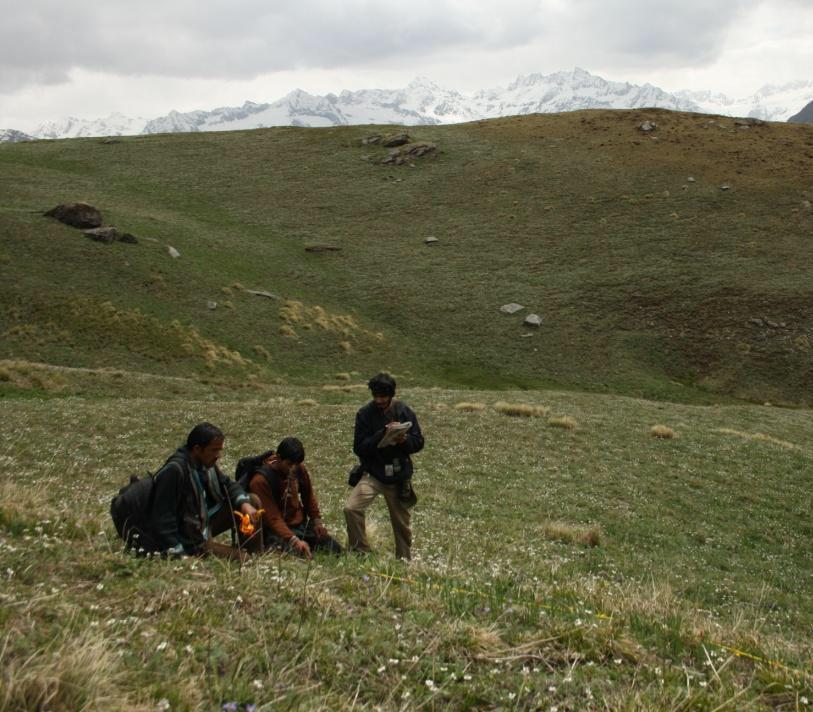Rajat Ramakant Nayak
This study aims at a better understanding of the fire-vegetation-grazing dynamics in the Western Himalayan landscape which could help in rationalising the existing management practices.

Fire and grazing have played a major role in determining the structure and composition of many of the world's ecosystems. The Himalayas experience high levels of livestock grazing and fire. Each of these factors have been studied individually and shown to have influence on ground vegetation composition and structure. However our knowledge on their combined role in shaping these landscapes is limited.
The Western Himalayas is part of the Himalayan biodiversity hotspot. Here, people have traditionally been pastoralists depending on the mountainous grasslands for their livelihood. They regularly burn forests in the dry months to encourage a new flush for their livestock. Thus, fire and grazing are two integral parts which together have reshaped these landscapes. However, the growing concern about over-grazing and increasing fire-frequency as a cause of serious disturbance and a threat to biodiversity has resulted in restriction on grazing and costly protection from fire in several areas over the last few decades. These restrictions, which are based on general perception and neglect the fire-vegetation-grazing dynamics, have affected the pastoralists and may pose a threat to existing biodiversity. Our study aims at a better understanding of the fire-vegetation-grazing relationships which could help in developing better management practices
Our study will contribute towards:
(a) understanding the role played by fire and grazers, alone and in combination, in structuring the Western Himalayan landscape,
(b) determining the effects of over grazing and increased fire frequency on ground vegetation composition,
(c) determining acceptable levels of human activities by way of grazing and /or fire from the point of view of biodiversity conservation.
The study will help in developing management practices which are based on strong ecological data rather than on the general perception. Finally, the study will help standardize methods and study design for larger scale experiments and models extending the present work.